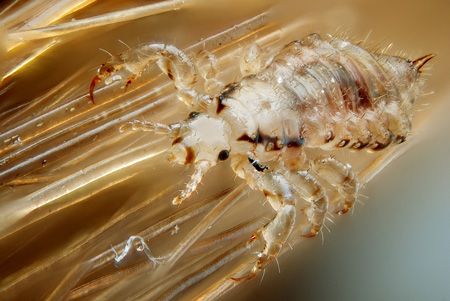 Lice (the plural of louse) are very common, especially amongst children ages 3 to 12 years. It is contagious and annoying, and there will never be a cure but we can treat and prevent it.
Lice (the plural of louse) are very common, especially amongst children ages 3 to 12 years. It is contagious and annoying, and there will never be a cure but we can treat and prevent it.
Head lice are small parasite insects that live on human hair and feed on small amounts of blood, drawn from the scalp. They have been around for thousands of years, and like any other insect, they adapt to their environment to survive.
Head lice feed 3 to 4 times a day and without blood will dehydrate. They can survive up to 8 hours, in a dry climate and up to 24 hours, in a humid climate. Nits are the eggs of the head louse. These nits are small, yellowish-white, oval shaped eggs that are glued to an angle near the base of a hair shaft. If the nit is white, it has hatched and is empty, if the nit is brown it has an insect inside and is ready to hatch.
Nits are laid by live lice. It takes 7–10 days for a nit to hatch, and another 7-10 days for the female to begin to lay her own eggs. An egg requires warmth to survive. The further away from the scalp, the less likely they are to survive.
The head lice cycle can last up to 35 days, beginning with eggs being laid. They are then hatched, and matured into adults. A female louse may lay up to 150 nits, in this period.
An adult louse is no bigger than a sesame seed, and is greyish, white or tan. The baby lice (or nymphs) are smaller and become adult lice about 1 to 2 weeks after being hatched.

Depending on how sensitive the child’s skin is, it may take weeks for them to start scratching. This is caused by a reaction to the saliva of the lice. They may also feel the louse moving around and tickling their head.
Head to head contact is the most common way to catch head lice. They are able to crawl onto objects that come in to contact with human hair, but they cannot fly or jump.
Head lice is found in all types of hair; clean, dirty, long, short, curly or straight. They are not known to transmit any diseases, however infections may result if the skin is broken by repeated scratching.
It is important to remember that lice is very common and is nothing to be embarrassed or ashamed about. It doesn’t mean that your child has dirty hair and it is not a sign of poor hygiene. It’s part of growing up and we’ve all had them. Thankfully now, you can reduce the risk, by using the best tools in the business. –the “No Nits Naturally” range.
*Life cycle diagram from Department of Health, Victoria

